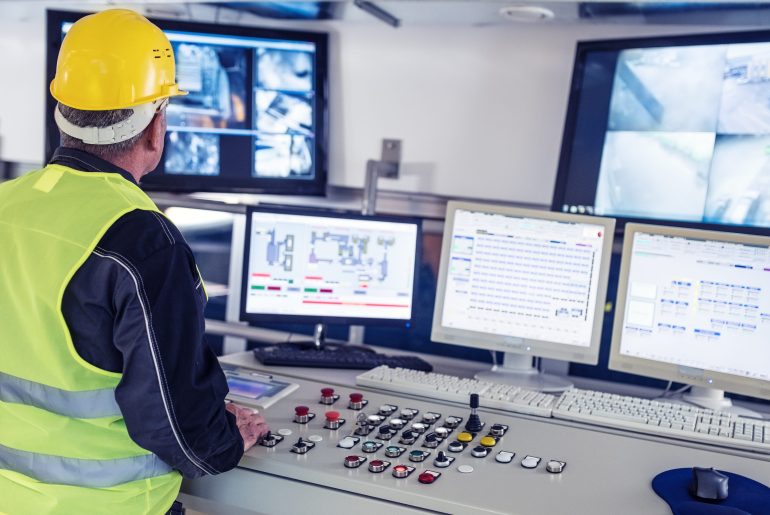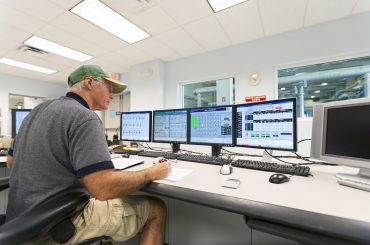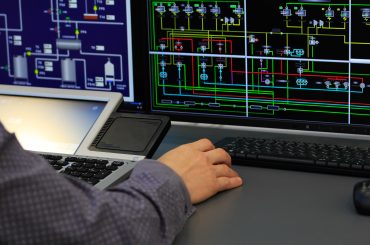Asset management is a foundational component OT security as it provides us with a comprehensive understanding of our operational technology infrastructure. We can’t protect what we don’t know we have. By maintaining an accurate inventory of OT assets, we can identify vulnerabilities, prioritize security measures, and effectively respond to incidents.
Asset management is essential in enabling other protections such as vulnerability management, access control enforcement, and network segmentation to protect critical systems from unauthorized access and potential threats. Furthermore, it facilitates regulatory compliance, enhances risk assessment, and ensures proper lifecycle management of assets. Basically Asset Management is step one in securing an OT environment.
What are OT Assets?
OT assets, also known as Operational Technology assets or Industrial Control System (ICS) assets, are the physical and digital components found within manufacturing and industrial environments. These assets are used to monitor, control, and automate industrial processes and critical infrastructure. They differ from traditional IT (Information Technology) assets in that they are specifically designed for operational and industrial purposes.
We can divide OT assets into the following categories
- Control Systems: These are the core components responsible for monitoring and controlling industrial processes. They can include Distributed Control Systems (DCS), Programmable Logic Controllers (PLC), Supervisory Control and Data Acquisition (SCADA) systems, and Human Machine Interfaces (HMIs).
- Network Infrastructure: OT environments have their own network infrastructure to enable communication between different assets. This infrastructure may include switches, routers, gateways, firewalls, and other networking equipment.
- Sensors and Actuators: These are devices used to collect data from the physical environment or interact with it. Examples include temperature sensors, pressure sensors, flow meters, level sensors, motors, valves, and actuators.
- Industrial Machinery: OT environments often include a variety of industrial machinery and equipment specific to the industry or process. This can include pumps, turbines, generators, compressors, conveyor systems, robotic systems, and manufacturing equipment.
- Physical Infrastructure: This refers to the physical components of an OT environment, such as power distribution systems, transformers, substations, pipelines, tanks, and other physical assets.
- Data Storage and Historians: OT environments generate significant amounts of data, and therefore require storage systems to store operational data. Historians are commonly used to store time-series data for analysis, troubleshooting, and regulatory compliance purposes.
- Communication Devices: These include devices used for communication within the OT environment, such as radios, modems, gateways, and wireless access points.
- Security Devices: In order to protect OT assets from cyber threats, security devices such as firewalls, intrusion detection systems, and antivirus software may be deployed.
- Software Applications: Various software applications are used in OT environments, including asset management systems, maintenance management systems, energy management systems, and data visualization software.
Challenges in OT Asset Management
The primary challenges in OT security asset management stem from the unique characteristics of operational technology environments.
- Firstly, OT environments often have a large number of heterogeneous and interconnected assets, making it challenging to accurately identify and inventory all assets.
- Critical nature of OT operations requires continuous asset availability, making maintenance and updates a delicate balancing act between security and operational continuity.
- OT assets typically have long lifecycles and may not be easily patched or updated, resulting in outdated and vulnerable systems.
- The lack of standardized protocols and the use of legacy systems complicate asset management efforts.
- The convergence of IT and OT systems introduces new vulnerabilities, as security practices and policies differ between the two domains.
Overcoming these challenges requires a combination of technical solutions, long term organizational commitment, and specialized expertise.
Limited Asset Visibility
One of the main hurdles is the lack of clear visibility into all assets within the OT ecosystem. The re are a few reasons for that
Scale and diversity of OT assets
One primary reason for this challenge is the sheer scale and diversity of OT assets. These environments may include numerous control systems, sensors, actuators, industrial machinery, networking devices, and other components. Some assets may be hidden or embedded within larger systems, making them difficult to identify and track. Furthermore, assets can be added or removed without proper documentation or oversight, leading to discrepancies in asset inventories.
Lack of standardized asset identification and management practices
Another contributing factor is the lack of standardized asset identification and management practices in OT environments. Unlike IT environments, where asset management frameworks and protocols are more established, OT systems often rely on proprietary protocols and legacy technologies that lack uniformity. This makes it challenging to implement a consistent and centralized asset tracking mechanism across different OT systems and vendors.
Legacy systems with little compatibility and no monitoring capabilities
Moreover, OT assets often have long lifecycles, which means that older or legacy systems may still be in use. These systems might not have built-in monitoring capabilities or compatibility with modern asset management tools. As a result, asset visibility becomes limited, and manual efforts are required to collect data and update inventories.
To address the challenge of asset visibility in OT asset management, we need to invest in robust asset discovery and monitoring solutions specifically tailored for OT environments. These solutions should support diverse protocols, integrate with legacy systems, and provide real-time visibility into asset inventory, configuration, and status. Additionally, establishing standardized asset identification practices and implementing proactive asset tracking processes can help maintain an accurate and up-to-date view of assets within OT environments.
Legacy System Compatibility
In many operational technology (OT) environments, legacy systems are still in use, often with long lifecycles that extend well beyond their originally intended lifespan. These legacy systems may lack standardized protocols, modern security features, and built-in monitoring capabilities, making them difficult to manage effectively. Updating or patching these systems to address security vulnerabilities can be complex, as compatibility concerns and potential disruptions to critical operations need to be carefully managed.
One challenge is the limited interoperability between legacy systems and newer asset management tools and technologies. Legacy systems often use proprietary protocols or outdated communication interfaces that may not be compatible with modern monitoring and management solutions. This compatibility gap can hinder the ability to collect real-time data, monitor asset performance, and detect security vulnerabilities.
Another challenge arises from the limited visibility and control offered by legacy systems. These systems often lack comprehensive monitoring and reporting capabilities, making it harder to obtain detailed asset information, such as configuration data, software versions, or patch levels. As a result, maintaining an accurate and up-to-date inventory of assets becomes a complex and manual process.
Furthermore, the lack of vendor support and updates for legacy systems presents a security risk. As new vulnerabilities are discovered, security patches may not be readily available for these older systems, leaving them exposed to potential cyber threats. Additionally, legacy systems may not meet modern security standards, making them more susceptible to attacks and breaches.
To address the challenge of legacy system compatibility in OT asset management, organizations can employ various strategies. One approach is to leverage gateways or protocol converters that bridge the gap between legacy systems and modern asset management solutions. These gateways can translate proprietary protocols into standardized ones, allowing better integration and visibility into legacy assets.
Another strategy is to implement retrofits or upgrades to legacy systems where feasible. This may involve replacing outdated components, implementing security patches, or adding monitoring capabilities to enhance visibility and control. However, such retrofits need to be carefully planned and executed to avoid disrupting critical operations.
Additionally, organizations should consider implementing a layered security approach that incorporates network segmentation, intrusion detection systems, and other security measures to mitigate risks associated with legacy systems. Regular risk assessments, vulnerability scans, and security audits can help identify and address potential vulnerabilities in these older assets.
Limited Security Expertise
OT environments require specialized knowledge to understand the intricacies of operational technology systems and their associated security risks. Traditional OT environments have historically focused on operational reliability and safety rather than cybersecurity. As a result, there is a shortage of professionals who possess both in-depth knowledge of industrial automation systems and expertise in cybersecurity practices.
Traditional controls engineers and OT professionals who possess extensive knowledge of industrial automation may lack the specialized expertise in IT security and network design. While they understand the operational aspects of OT assets, they may not be well-versed in the latest cybersecurity threats, best practices, and industry standards.
Many cybersecurity professionals primarily trained in IT environments may lack the necessary knowledge and experience with industrial control systems (ICS), SCADA, PLCs, and other OT assets. Understanding the intricacies of these systems is crucial to accurately assess and mitigate risks specific to OT environments.
To address the challenge of the lack of security expertise in OT asset management, we should focus on bridging the gap between OT and IT domains. This can be achieved through training programs and cross-functional collaborations. Building a diverse team that combines OT specialists with cybersecurity professionals can facilitate knowledge sharing and help develop a holistic approach to OT security.
Collaboration between OT and IT teams is also crucial. Encouraging knowledge exchange and fostering a culture of cross-disciplinary learning can help close the gap in expertise. This can involve regular joint meetings, shared training opportunities, and collaborative projects to ensure a comprehensive understanding of both OT operations and cybersecurity practices.
Additionally, organizations can leverage external expertise through partnerships with specialized security firms or consultants with experience in OT environments. These experts can provide guidance, conduct assessments, and help implement robust security measures tailored to the specific OT assets and systems in use.
Complex System Integration
OT environments often consist of various interconnected systems including legacy systems and devices from different vendors. Integrating these diverse systems while maintaining security can be a daunting task. Different protocols, standards, and proprietary interfaces used by different devices can create compatibility issues and increase the risk of security vulnerabilities. Managing the complexity of integrating multiple OT systems securely is a persistent challenge. This complexity introduces several challenges:
- Interoperability: Integrating different OT assets from various vendors can be challenging due to the lack of standardized protocols and communication interfaces. Each vendor may have its own proprietary protocols, which may require custom integrations or gateways to facilitate communication between different systems. Ensuring seamless interoperability and data exchange becomes a complex task, requiring expertise in both OT systems and integration technologies.
- Legacy Systems: Many OT environments continue to rely on legacy systems that were implemented years ago. These legacy systems may have limited compatibility with modern technologies, making it difficult to integrate them with newer systems or to obtain real-time data from them. Retrofitting or upgrading legacy systems to enable smooth integration can be a complex and time-consuming process, requiring careful planning and consideration of potential operational disruptions.
- Scalability: OT environments often experience expansions or upgrades over time as new assets are added or systems are updated. Managing the integration of new assets while maintaining compatibility with existing infrastructure can be a challenge. Scaling the integration architecture to accommodate the increasing number of assets, data volumes, and communication requirements requires careful design and consideration of performance and latency considerations.
- Data Management: Effective OT asset management involves collecting, analyzing, and leveraging data from various assets for monitoring, maintenance, and decision-making purposes. However, integrating data from different systems with varying data formats, structures, and quality can be complex. Ensuring data consistency, accuracy, and timeliness across integrated systems becomes a challenge that requires robust data management strategies, including data cleansing, normalization, and synchronization.
- Security Considerations: Integrating different OT assets can introduce security risks if not properly addressed. Each integrated component becomes a potential attack surface, and vulnerabilities in one system can potentially affect the entire integrated environment. Ensuring secure integration requires implementing proper access controls, secure communication protocols, and monitoring mechanisms to detect and respond to security incidents effectively.
To address the challenge of complex system integrations in OT asset management, we should adopt a systematic and comprehensive approach. This includes thorough
- planning and evaluation of integration requirements
- engaging experienced system integrators or consultants, and leveraging standardized protocols and industry best practices for interoperability
- investing in scalable integration architectures
- utilizing middleware and data integration platforms
- implementing robust security measures
- regular testing, monitoring, and maintenance
Lack of Comprehensive Asset Management
Maintaining an accurate and up-to-date inventory of assets is crucial but challenging in OT security asset management. Asset management is more than just an initial asset inventory activity and requires a comprehensive program to implement effective asset management practices. That can be challenging for several reasons:
- Asset Proliferation: OT environments often consist of numerous interconnected devices, equipment, and systems. Over time, assets may be added, modified, or removed without proper documentation or oversight. This can lead to discrepancies and gaps in the asset inventory. Additionally, the rapid adoption of Industrial Internet of Things (IIoT) technologies and the proliferation of connected devices further increase the complexity and number of assets that need to be tracked.
- Heterogeneity of Assets: OT environments encompass diverse assets from different vendors, generations, and technologies. These assets may have unique identification methods, data formats, or management interfaces, making it challenging to maintain a centralized and standardized inventory. Legacy systems, proprietary protocols, and the lack of interoperability further complicate the process of capturing and managing asset information.
- Lack of Automated Discovery: In OT environments, asset discovery is often a manual and time-consuming process. Identifying and documenting assets individually can be impractical, especially in large-scale environments. This manual effort can result in incomplete or outdated inventories, as assets may be missed or not promptly recorded. Without automated discovery mechanisms, it becomes difficult to capture assets that are dynamically connected or deployed in remote or inaccessible locations.
- Shadow IT and Unauthorized Assets: In some cases, OT environments may have shadow IT or unauthorized assets that are not officially recognized or documented. These assets can include unapproved devices, rogue equipment, or systems added by individuals or departments without proper oversight. The lack of visibility and control over these assets can introduce security risks, compliance issues, and operational inefficiencies.
- Lack of Change Management: Changes to assets, such as updates, replacements, or decommissioning, may not be adequately documented or communicated within the organization. Without a robust change management process, the asset inventory can quickly become outdated, leading to inaccurate or incomplete information about the current state of assets.
To overcome the challenge of a lack of comprehensive asset inventory in OT asset management, organizations should implement proactive strategies and practices:
- Automated Discovery and Inventory Tools: Leveraging automated asset discovery tools can help identify and collect asset information more efficiently. These tools can scan the network, capture device information, and populate the inventory database, reducing manual efforts and ensuring a more accurate and comprehensive inventory.
- Standardized Asset Identification: Establishing standardized asset identification methods and naming conventions can promote consistency and ease of tracking assets across the OT environment. Implementing unique identifiers, tags, or barcodes can simplify asset identification and streamline inventory management.
- Change Management Processes: Implementing robust change management processes that document asset modifications, additions, or removals is essential. Regularly updating the inventory based on authorized changes ensures that the asset information remains accurate and reflective of the current state.
- Regular Audits and Verification: Conducting periodic audits and verification exercises can help identify discrepancies or gaps in the asset inventory. These audits can involve physical inspections, review of documentation, and validation against the actual deployed assets.
- Integration with Configuration Management Databases: Integrating the asset inventory with configuration management databases and other relevant systems can help ensure consistency and synchronization of asset information across multiple platforms. This integration facilitates streamlined management and enables a more comprehensive view of assets.
OT Asset Management Best Practices
Effective asset management programs are comprehensive and follow a number of best practices some of which are listed here:
- Comprehensive Asset Inventory: Conduct a thorough assessment to identify and document all OT assets, including control systems, devices, and equipment, to establish a complete inventory.
- Automated Asset Discovery: Utilize automated tools to discover and capture asset information, ensuring accurate and up-to-date inventories while reducing manual efforts and errors.
- Standardized Asset Identification: Establish standardized naming conventions and identification methods such as a criticality rating scale to promote consistency and facilitate asset tracking across the organization.
- Change Management Process: Implement a robust change management process to track modifications, additions, and removals of assets, ensuring accurate and timely updates to the inventory.
- Security Measures: Implement comprehensive security measures, including access controls, network segmentation, intrusion detection systems, and regular vulnerability assessments, to protect OT assets from potential threats.
- Asset Lifecycle Management: Implement practices to manage the lifecycle of assets, including timely upgrades, replacements, or decommissioning, to ensure optimal performance and reduce security risks.
- Training and Education: Provide training and education to personnel on OT asset management best practices, emphasizing the importance of accurate inventories and adherence to security protocols.
- Cross-Functional Collaboration: Foster collaboration between IT and OT teams to leverage their expertise and ensure effective integration and management of OT assets.
- Policy and Procedure Review: Regularly review and update asset management policies and procedures to align with evolving technology, industry standards, and regulatory requirements.
- Specialized Tools and Platforms: Consider utilizing specialized OT asset management software or platforms to streamline inventory management, automate monitoring, and enhance visibility and control of OT assets.
Risk Reduction Strategy
Risk reduction strategy in OT asset management should be tailored to the specific user or business. There is no one size fits all. The critical factor is to focus the strategy on risk reduction and not on checking as many security boxes as possible. Risks and risk appetite at any time are unique to each user and so should the be the risk reduction strategy. Below are some key considerations for developing an effective risk reduction strategy:
- Risk Assessment: Conduct a comprehensive risk assessment to identify potential threats, vulnerabilities, and associated risks to OT assets. This assessment should encompass both internal and external factors that could impact asset security and operational continuity.
- Asset Prioritization: Prioritize assets based on their criticality and potential impact on operations. Focus on securing high-risk assets that are essential for the functioning of critical processes or have sensitive data.
- Security Controls: Implement a range of security controls to mitigate identified risks. This may include access controls, network segmentation, encryption, intrusion detection systems, and security monitoring tools.
- Patch and Vulnerability Management: Establish a robust patch and vulnerability management process to regularly update and remediate vulnerabilities in OT assets. Ensure that patches are tested and deployed in a timely manner to minimize exposure to known security risks.
- Secure Configuration: Follow secure configuration practices for OT assets, including disabling unnecessary services, changing default passwords, and configuring access controls based on the principle of least privilege.
- Incident Response Plan: Develop an incident response plan specific to OT assets to effectively respond to and mitigate security incidents. This plan should outline roles, responsibilities, communication protocols, and recovery procedures.
- Employee Awareness and Training: Educate employees about security best practices, including the risks associated with OT assets and their role in safeguarding them. Regular training and awareness programs can help foster a security-conscious culture within the organization.
- Third-Party Risk Management: Evaluate the security posture of third-party vendors and contractors who have access to OT assets. Establish contractual obligations regarding security requirements and conduct periodic assessments of their compliance.
- Continuous Monitoring: Implement continuous monitoring mechanisms to detect and respond to security events in real-time. This includes network traffic analysis, log monitoring, and anomaly detection to identify potential threats or suspicious activities.
- Regular Audits and Assessments: Conduct regular audits and assessments of OT assets to ensure compliance with security standards and identify any gaps or areas for improvement.
Integration of OT Asset Management with Enterprise IT Systems
Integration of OT asset management with enterprise IT systems is becoming increasingly important to enhance operational efficiency, improve visibility, and align business objectives with operational technology (OT) initiatives. Here are some key points to consider when integrating OT asset management with enterprise IT systems:
- Standardized Data Exchange: Implement standardized protocols and formats for data exchange between OT asset management systems and enterprise IT systems. This ensures seamless integration and facilitates the sharing of asset information, such as asset inventory, maintenance schedules, and performance data.
- Data Synchronization: Establish mechanisms to synchronize asset data between OT asset management systems and enterprise IT systems. This ensures that both systems have consistent and up-to-date information, reducing data discrepancies and improving decision-making.
- Asset Lifecycle Management: Integrate OT asset management with enterprise IT systems to enable end-to-end asset lifecycle management. This includes asset procurement, tracking, maintenance, and retirement, ensuring a holistic view of asset-related activities across the organization.
- Real-time Monitoring and Analytics: Integrate OT asset management systems with enterprise IT systems to leverage advanced analytics capabilities. Real-time monitoring of OT assets combined with enterprise-level analytics can provide valuable insights for predictive maintenance, performance optimization, and operational decision-making.
- Security Integration: Ensure the integration of OT asset management systems with enterprise IT systems includes robust security measures. This includes access controls, authentication mechanisms, and encryption to protect sensitive asset data and prevent unauthorized access.
- Cross-Functional Collaboration: Foster collaboration between IT and OT teams to facilitate the integration process. Both teams bring valuable expertise and perspectives, ensuring that the integration aligns with technical requirements and business objectives.
- Enterprise-wide Visibility: The integration of OT asset management with enterprise IT systems enables a centralized view of assets, encompassing both OT and IT environments. This provides a comprehensive understanding of asset utilization, health, and performance across the entire organization.
- Reporting and Compliance: Integrate OT asset management systems with enterprise IT systems to streamline reporting and compliance activities. This facilitates regulatory compliance, audit trails, and reporting requirements, ensuring transparency and adherence to industry standards.
- Scalability and Flexibility: Design the integration architecture to accommodate future growth and evolving technologies. Consider scalability and flexibility to easily incorporate new OT assets, adapt to changing business requirements, and leverage emerging IT capabilities.
- Ongoing Maintenance and Support: Establish processes for ongoing maintenance and support of the integrated OT asset management and enterprise IT systems. Regular updates, monitoring, and collaboration between IT and OT teams are crucial to ensure the continued effectiveness and reliability of the integration.
Regulatory Compliance and Standards
In the United States, several industries are faced with regulatory compliance requirements in OT security. The energy sector is subject to regulations enforced by the North American Electric Reliability Corporation (NERC) and its Critical Infrastructure Protection (CIP) standards. The medical device industry falls under the purview of the Food and Drug Administration (FDA) and The Health Insurance Portability and Accountability Act (HIPPA) and its regulations related to the security of medical devices and health information.
Additionally, industries such as transportation, financial services, and defense also have regulatory compliance requirements to ensure the security and resilience of their OT systems. These industries must adhere to specific regulations and guidelines to protect critical infrastructure and mitigate the risks associated with OT security.
Examples of regulatory requirements as it pertains to OT asset management:
- Coming soon
Lifecycle Management and Maintenance Strategies
Lifecycle management and maintenance strategies are critical components of effective OT asset management. They involve the systematic planning, execution, and monitoring of activities throughout the lifecycle of operational technology (OT) assets. Here are key points to consider regarding lifecycle management and maintenance strategies in OT asset management:
- Asset Inventory and Documentation: Develop a comprehensive asset inventory that includes detailed information about each asset, such as its specifications, location, criticality, maintenance history, and associated documentation. This inventory serves as the foundation for effective lifecycle management and maintenance planning.
- Asset Acquisition and Deployment: Ensure proper procurement processes for OT assets, including vendor evaluation, testing, and validation to meet specific operational requirements. Establish guidelines for asset deployment, including proper installation, configuration, and integration within the OT environment.
- Preventive Maintenance: Implement a proactive approach to maintenance by conducting regular inspections, calibration, cleaning, and component replacements based on manufacturer recommendations and industry best practices. This helps prevent asset failures and ensures optimal performance and longevity.
- Predictive Maintenance: Utilize advanced technologies such as condition monitoring, data analytics, and machine learning to predict asset failures and optimize maintenance activities. By analyzing asset data, organizations can identify patterns and indicators of potential failures, enabling timely maintenance interventions.
- Risk-Based Maintenance: Prioritize maintenance activities based on the criticality and risk associated with each asset. Focus on high-risk assets or those that have a significant impact on operations, safety, or regulatory compliance. This approach helps allocate maintenance resources efficiently and effectively.
- Asset Upgrades and Modernization: Develop a strategy for asset upgrades and modernization to ensure the continuous improvement of OT infrastructure. This includes assessing the obsolescence risks, evaluating new technologies, and implementing necessary upgrades or replacements to maintain compatibility, security, and performance.
- Change Management: Implement a structured change management process to handle modifications to OT assets effectively. This includes evaluating the impact of changes, conducting risk assessments, and ensuring proper testing and documentation to minimize disruptions and maintain system integrity.
- Decommissioning and Disposal: Define procedures for decommissioning and proper disposal of retired assets to ensure data security, environmental compliance, and adherence to applicable regulations. Safely disposing of assets prevents unauthorized access to sensitive information and reduces environmental impact.
- Performance Monitoring and Optimization: Continuously monitor asset performance using key performance indicators (KPIs) and metrics to identify areas for improvement and optimization. Analyze data trends to enhance asset efficiency, reliability, and availability.
- Documentation and Knowledge Management: Maintain accurate and up-to-date documentation throughout the asset lifecycle. This includes maintenance records, work orders, configuration details, and lessons learned. Effective knowledge management ensures the transfer of knowledge, enables effective troubleshooting, and supports future maintenance activities.
Emerging Technologies and Trends
There are emerging technologies with OT asset management features in each of the areas below. I’ll explore them each in future guides and reviews.
- Industrial Internet of Things (IIoT): The IIoT enables the connectivity and integration of OT assets with sensors, devices, and networks, facilitating real-time monitoring, data collection, and analysis. It allows for remote asset management, predictive maintenance, and improved asset performance.
- Cloud Computing and Edge Computing: Cloud-based platforms and edge computing architectures offer scalable storage, processing power, and analytics capabilities for OT asset data. They enable centralized data management, real-time insights, and remote access to asset information, facilitating efficient asset monitoring and management.
- Big Data Analytics: Leveraging advanced analytics and machine learning algorithms, organizations can extract valuable insights from large volumes of OT asset data. This enables predictive maintenance, anomaly detection, and optimization of asset performance, leading to cost savings and improved reliability.
- Artificial Intelligence (AI) and Machine Learning (ML): AI and ML technologies play a significant role in OT asset management by automating processes, analyzing complex data patterns, and enabling predictive and prescriptive maintenance. These technologies improve asset monitoring, fault detection, and decision-making.
- Digital Twin: A digital twin is a virtual replica of a physical OT asset, providing a real-time representation of its status, performance, and behavior. Digital twins enable simulations, what-if scenarios, and predictive modeling, supporting proactive maintenance, asset optimization, and performance analysis.
- Cybersecurity Solutions: As the threat landscape evolves, robust cybersecurity solutions become essential in OT asset management. Technologies like intrusion detection systems (IDS), secure remote access, network segmentation, and encryption help protect OT assets from cyber threats and vulnerabilities.
- Blockchain Technology: Blockchain offers a distributed and tamper-proof ledger for tracking and verifying asset-related information, transactions, and maintenance records. It enhances asset traceability, supply chain management, and auditability, ensuring data integrity and trust.
- Augmented Reality (AR) and Virtual Reality (VR): AR and VR technologies enable remote training, troubleshooting, and maintenance of OT assets. They provide technicians with real-time information overlays, virtual guidance, and immersive experiences, improving efficiency and reducing downtime.
- 5G Connectivity: The deployment of 5G networks provides high-speed, low-latency communication capabilities, enabling faster and more reliable connectivity for OT assets. It supports real-time monitoring, data transfer, and remote management of assets in diverse locations.
- Integration with Enterprise Systems: Integration of OT asset management with enterprise-level systems, such as enterprise resource planning (ERP) and customer relationship management (CRM), facilitates seamless data sharing, asset tracking, and resource allocation.





